When I discovered the fabulously whimsical and colorful mosaic murals along the 1000 block of South Street in Philadelphia, I had no idea this outpouring of creativity was actually part of a fascinating preservation story. Visually, the neighborhood is delightful surprise, a colorful, mysterious and enigmatic world of unexpected images, embedded in the physical structure of the buildings. While the artwork is fun and engaging, it is also much more. It is physical evidence of the power of people to reclaim and reinvent their communities and redirect the forces of change that threaten them.
The story behind the array of public and privately owned mosaic murals is a fascinating one. In the late 1960s artists and urban pioneers Isaiah Zagar and his wife Julia moved to South Street, fresh from a stint in the Peace Corps in Peru. Isaiah was born in Philadelphia, but raised in New York where he graduated from the Pratt Institute of Art. He and his wife were drawn to South Street because it was a very affordable big city neighborhood with a distinctly bohemian flair. It was also a neighborhood in decline and under threat by the proposed construction of a new highway to link the Schuylkill Expressway and Interstate 95 called the Crosstown Expressway. South Philadelphia in the 1960s was suffering the same loss of population and jobs as many other working class neighborhoods in the city. Historically, South Philadelphia was an ethnically diverse neighborhood made up of Irish, Italian, Polish, Southern and Eastern Europeans immigrants and also African Americans who had migrated north from southern states. The influence of the Italian culture remains especially evident in churches, schools, small businesses and the outdoor Italian Market along 9th Street.
When the Zagars arrived in 1968 and opened the Eye’s Gallery full of clothing, jewelry and folk art at 402 South Street, they were part of movement to revitalize this neighborhood with new younger residents and businesses with an artsy feel. This 1960s and 1970s effort which produced new galleries, restaurants and music and theater venues was called the South Street Renaissance. The cool vibe of South Street was even immortalized in a popular 1963 hit song by the Orlons, a successful Philadelphia R & B quartet who first hit it big with the “Wah Watusi” and “Don’t Hang Up.” In the lyrics of “South Street” the Orlons sang “Where do all the hippies meet? South Street!” and called the street “the hippest street in town.” Property prices were very low, in part due to the uncertainty caused by the Crosstown Expressway plans, so entrepreneurs and would be home owners could take a chance on the re-emerging South Street neighborhood. The Zagars bought and renovated several properties in the neighborhood and Isaiah began work on his art studio at 1020 South Street.
The plan to build the Crosstown Expressway which would have obliterated many blocks of South Street and Lombard Street to create another east west inner city highway had gained momentum in the 1950s with the enactment of the Federal Highway Act in 1956. In that midcentury period of intense suburban development, creating an expressway through the southern heart of the city as a mirror to Interstate #676, the Vine Street Expressway, north of Market Street fit transportation planners’ models. If constructed, it would have cut a swath through South Philadelphia, displacing thousands of residents, destroying a multitude of houses and buildings and disrupting multiple neighborhoods. In 1967 the PA Department of Highways put the Crosstown Expressway on a six-year construction program, alarming local residents who fought back. Local activists representing the neighborhoods impacted by the expressway presented testimony to the Federal Highway Administration in 1969 and by year’s end, the project was removed from the construction list. In 1970 a study was done which determined that the project was not worth the expense. The city planning commission was still reluctant to abandon the idea, developing a new underground highway version of the expressway called “Southbridge” in 1972. That $750 million dollar project never happened. Instead, the funds intended for the new expressway were used to invest in mass transit with the purchase of regional rail and subway cars, buses and trolleys. So, what once would have been a neighborhood preservation nightmare became a smart investment in meeting the transportation needs of city dwellers. A very big win for neighborhood residents and community activists, artists and art enthusiasts, hippies and historic preservationists!
In 1994 Isaiah Zagar began work on the vacant lot next door to his studio adding tunnels, grottos and walls and decorating the surfaces with his unique handmade mosaic tiles and a variety of scavenged items and ordinary objects like bike wheels, dinner plates, fans, bottles and figurines. He was replacing graffiti with art that defied category. Isaiah’s work offered a boisterous display of creative energy full of colorful shapes and cleverly repurposed objects. While some neighbors disapproved of his unconventional public art, others supported him by dropping off leftover ceramic tiles from remodeling projects and other household golds for his possible use. The themes depicted in Isaiah’s mosaics were inspired by his own life and travel experiences and broader world events. They offer an intensely personal vision and serve as a kind of visual storytelling, both representational and abstract and open for interpretation by viewers. In 2002 as neighborhood land values were rising, the out of state owners of the vacant lot wanted to sell it for development, threatening the destruction of Isaiah’s work there. At that time the Philadelphia Magic Gardens was formed as a non-profit organization not just to purchase that property and preserve his artwork for public enjoyment, but to inspire creativity and community engagement by educating the public about folk, mosaic and visionary art. The Magic Gardens, a fully tiled indoor space and outdoor sculpture garden at 1020 South Street is now open daily to visitors. Many other of Isaiah’s mosaic murals adorn the walls of surrounding buildings and are simply a colorful part of the neighborhood streetscape. His murals can be found on more than 200 walls, with most of his work in Philadelphia.
Isaiah Zagar and his Magic Gardens have had a great influence on the appearance and artistic expression of his South Street neighborhood, but the area and his experiences there have also had a significant impact on his life. He credits his work with mosaics for giving him a renewed sense of purpose and spirituality and allowing him to overcome a serious depression. Now in his late seventies, Isaiah continues to create mosaic murals. He has left his mark on the neighborhood he loves, just as it has on him. The work of Isaiah Zagar is a unique offering of his seemingly boundless creative force captured in the very walls of the streets of South Philadelphia.
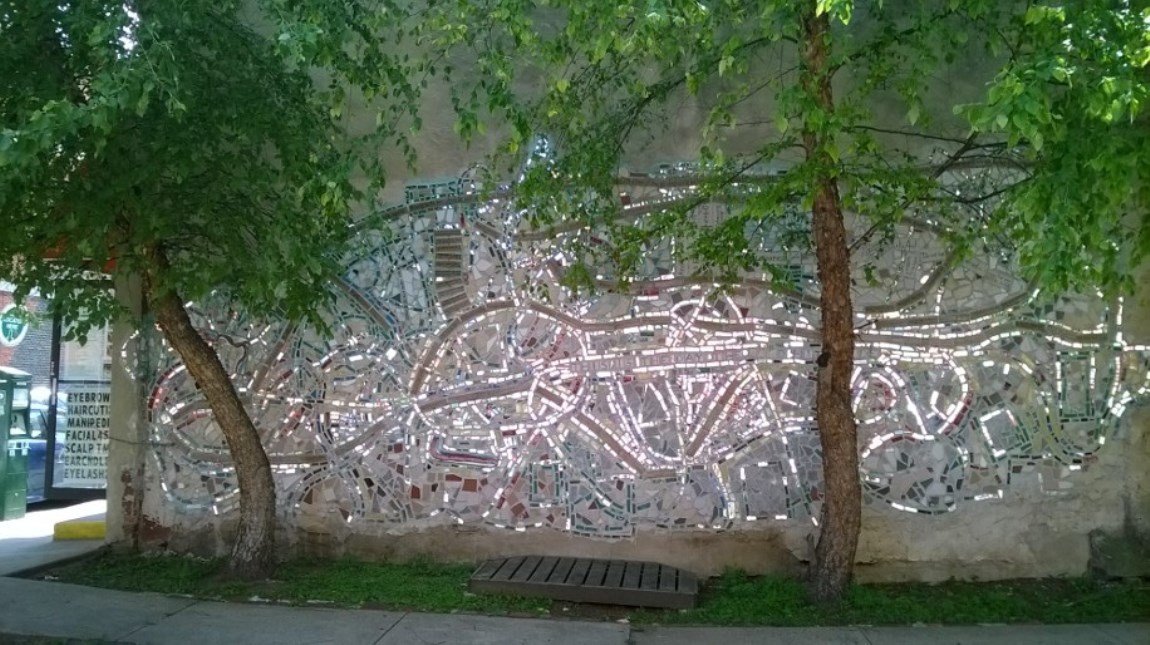
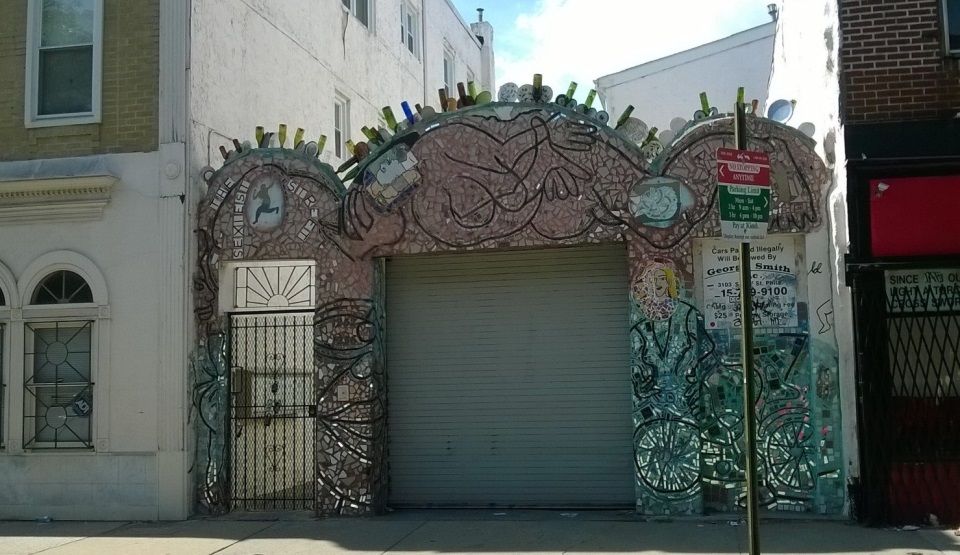
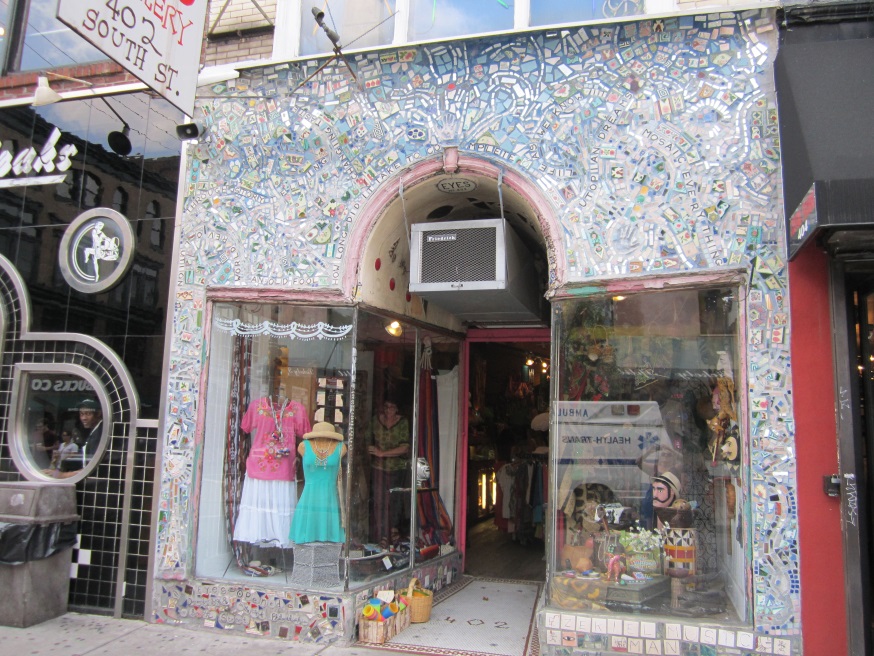
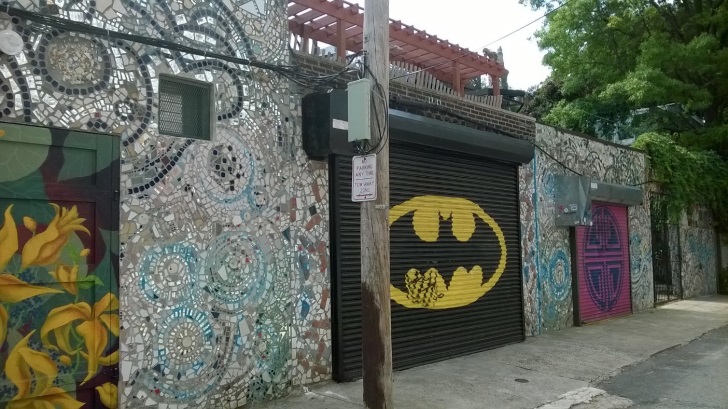
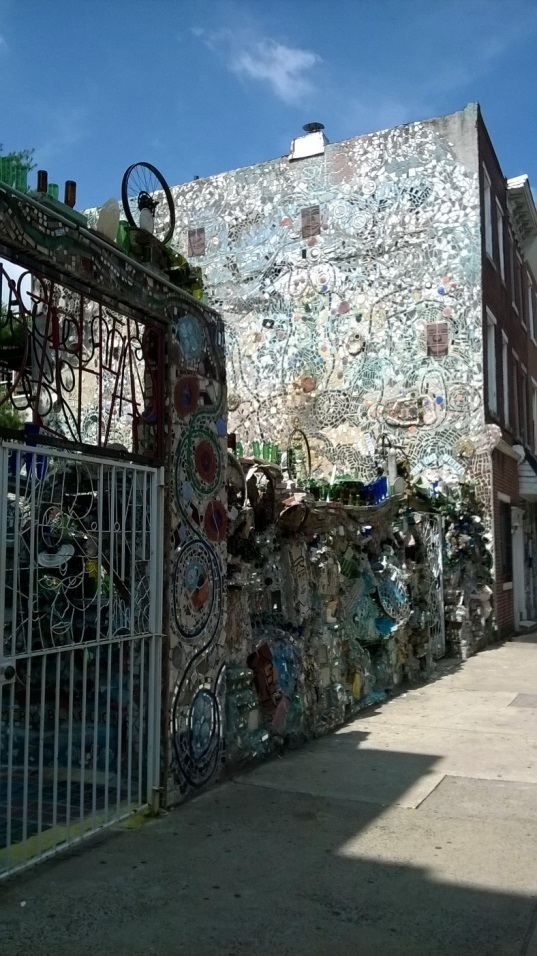
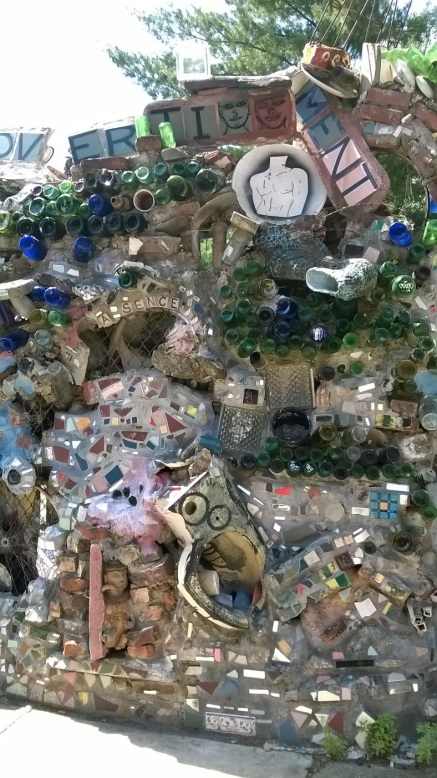
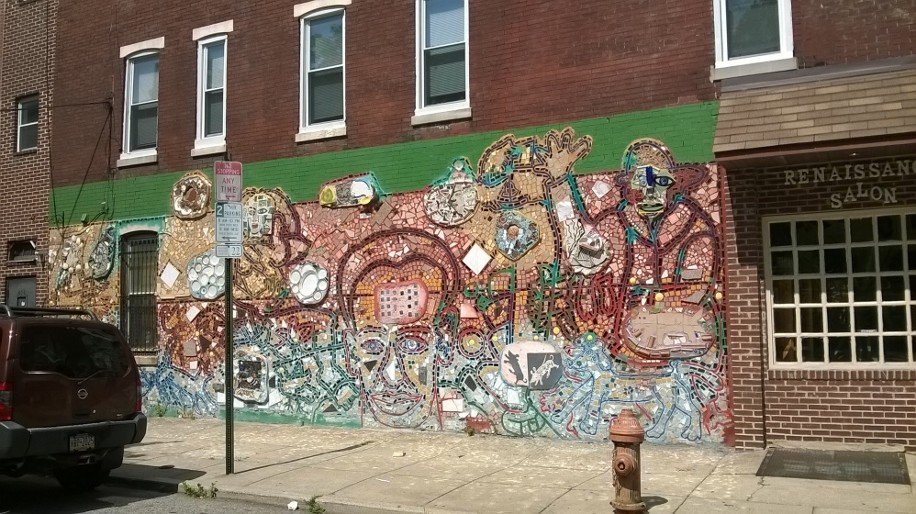
Leave a Reply